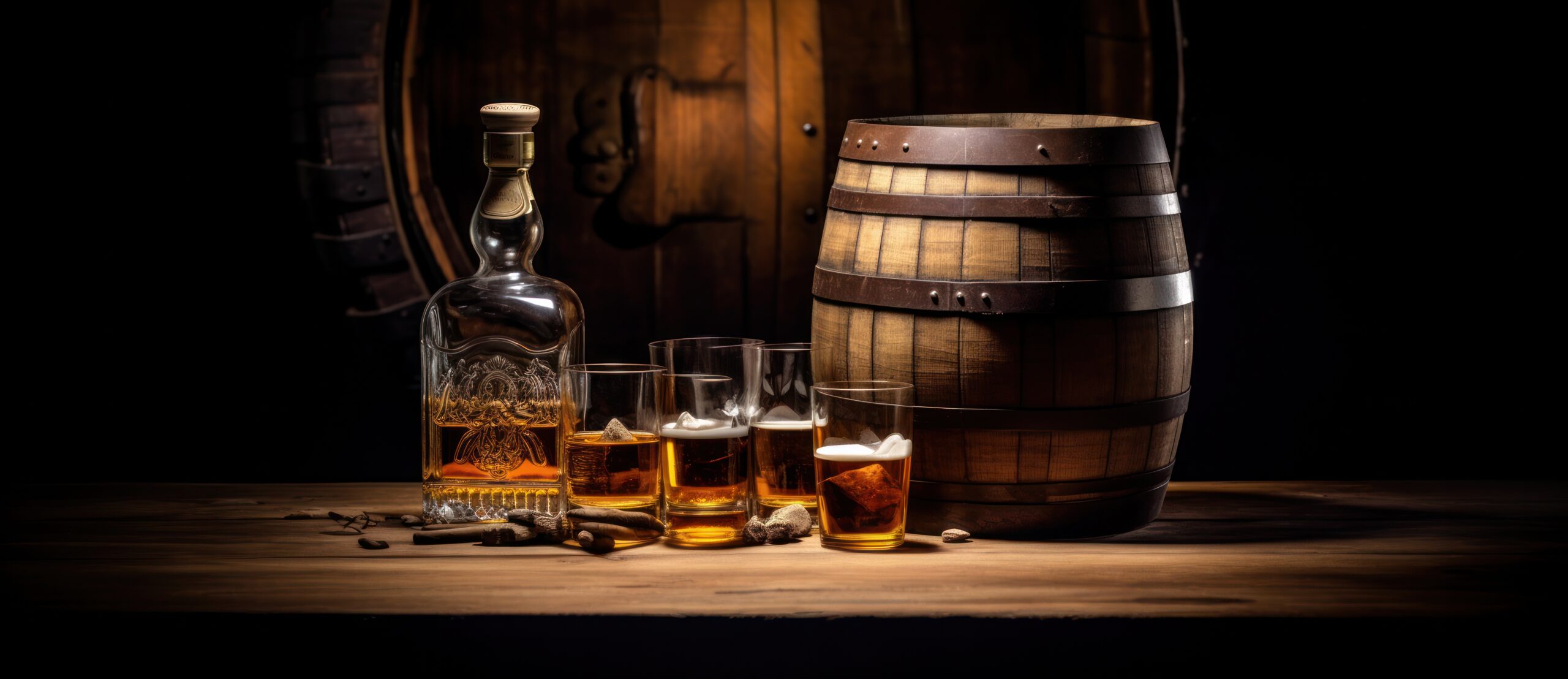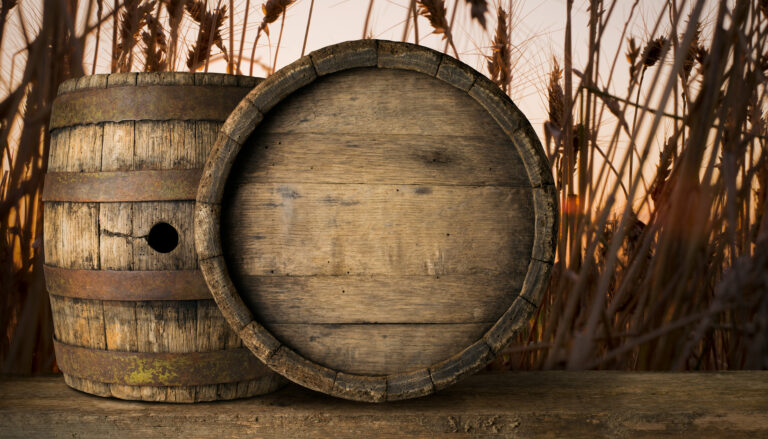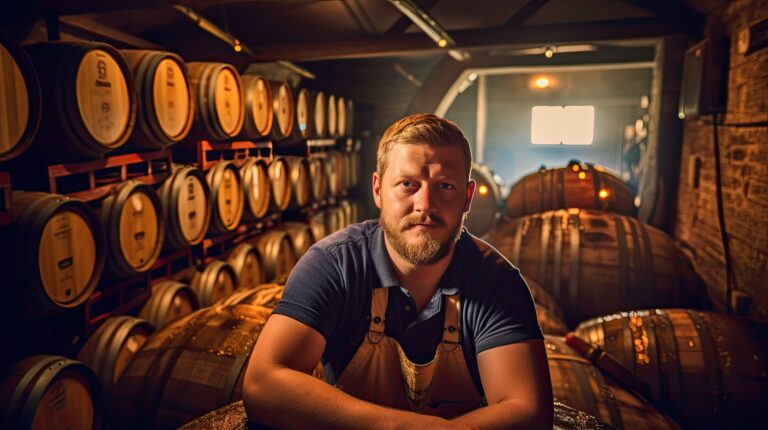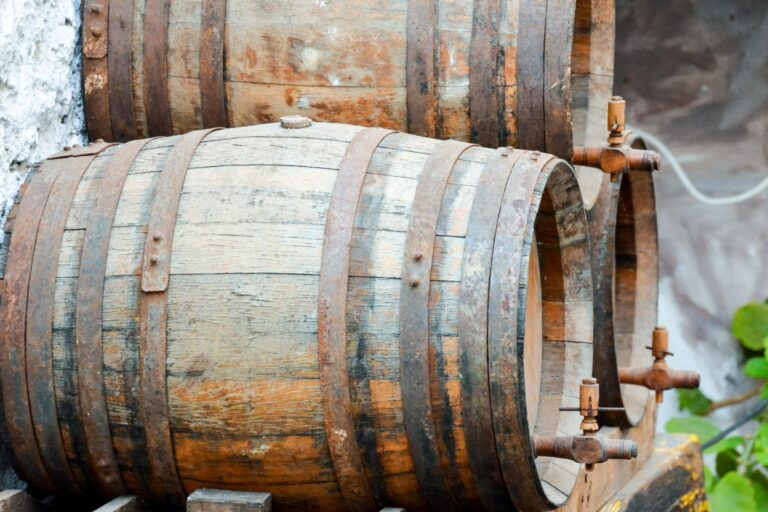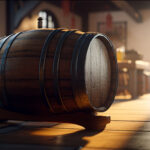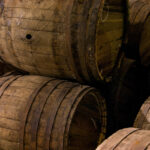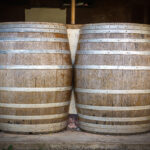Ever eye that fancy single barrel whiskey on the top shelf of your favorite bar? They definitely stand out with their unique labels and, let’s be honest, their sometimes higher price tags. Single barrel whiskeys can seem a bit mysterious, but they’re actually pretty straightforward. Let’s pull back the curtain on these special spirits and see why they command a bit more of your hard-earned cash. By the end of this, you’ll be able to spot a single barrel bottle with confidence and know exactly what you’re getting. You might even discover a new favorite. So, pour yourself a little something, sit back, and get ready for a quick lesson in all things single barrel.
What Is Single Barrel Whiskey?
Simply put, single barrel whiskey comes from just one barrel. It’s not blended with whiskey from other barrels. Since each barrel ages whiskey differently, single barrel whiskeys let you taste the unique flavors that come from a single, individual barrel.
Distilleries pick out special barrels they think will produce an exceptional flavor and then bottle the contents directly from that barrel. Because each barrel only yields so much whiskey, single barrel whiskeys are often small batch, sometimes only a few hundred bottles.
The specific barrel matters a lot. Things like what the barrel held before, the humidity, the temperature changes, and even where it sat in the warehouse all change how the whiskey ages and tastes. No two single barrel whiskeys will ever taste exactly the same, even if they’re from the same distillery.
Single barrel whiskeys usually cost a bit more, but many whiskey lovers think the variety of flavors and the fact that each bottle is unique makes it worth it. Each bottle is like getting a one-of-a-kind whiskey experience.
If you want to really explore all the flavors a certain type of whiskey can have, a single barrel is a great place to start. But once you open it, try to finish it within a year for the best taste. Cheers to you and your special single barrel!
The Single Barrel Process Explained
The single barrel process is all about letting you experience whiskey in its purest form. Distillers hand-pick barrels they think are exceptional and then bottle them without blending anything else in.
How It’s Made
Single barrel whiskeys start out like any other whiskey: with a bunch of barrels filled with new whiskey. As the whiskey ages, each barrel develops its own unique flavor, depending on how old it is, the type of wood, and where it’s stored in the warehouse.
Master distillers taste samples from different barrels and only choose the ones that meet their standards for quality and taste.
These chosen barrels are then bottled individually, so whiskey lovers can enjoy the special flavors of each barrel.
Bottling the whiskey as-is, without blending it with other barrels, shows you exactly how that single barrel’s characteristics shine through after aging. Each bottle even has a barrel number so you know exactly where it came from.
Single barrel whiskeys cost a bit more because they’re small batch, but whiskey fans appreciate the skill it takes to make them. If you’re a whiskey drinker who wants to try distinctive and complex flavors, a single barrel selection gives you a pure, unadulterated tasting experience. Enjoy!
What Makes Single Barrel Unique?
The unique flavor of single barrel whiskey comes from the individual barrel it’s aged in. Unlike blended whiskeys that mix spirits from different barrels, single barrel whiskey is bottled straight from just one.
Distinctive Taste
Because each barrel adds its own subtle characteristics as the whiskey ages, the whiskey from a single barrel will have a distinctive taste that’s unique to that barrel. The whiskey soaks up flavors from the barrel’s wood—like vanilla, cinnamon, and caramel—as well as the “angel’s share”—the part of the liquid that evaporates. This makes for a complex, one-of-a-kind spirit.
Limited Supply
Single barrel whiskeys are naturally rare because you can only bottle so much from one barrel. Once that barrel is empty, that specific flavor is gone forever. This scarcity makes them even more appealing to many whiskey fans. Some distillers release single barrel offerings as special releases, making them even more sought after.
Transparency
When you buy a bottle of single barrel whiskey, you often get details about that specific barrel, like the barrel number, where it was aged, and when it was bottled. This tells the drinker about the whiskey’s background and gives them a sense of connection to the distilling process. For anyone curious about whiskey, single barrel offers a chance to explore the subtle effects different barrels have.
Basically, single barrel whiskey lets you experience whiskey in its purest form, unadulterated and full of distinctive character. If you want to understand just how important wood and aging are to developing flavor, there’s no better way to learn than with a bottle of single barrel.
Examples of Popular Single Barrel Whiskey Brands
Here are some of the most popular single barrel whiskey brands:
- Maker’s Mark: Maker’s Mark hand-selects individual barrels for their single barrel releases. Their single barrel bottles showcase the unique flavors from different barrels and tend to be on the sweeter side.
- Jack Daniel’s: Jack Daniel’s produces single barrel select whiskey made from a blend of barrels to create a consistent flavor. They are known for a smokey, vanilla profile.
- Woodford Reserve: Woodford Reserve’s single barrel bourbon is complex with flavors of chocolate, cinnamon, and citrus. Barrels are hand-selected by master distillers.
- Knob Creek: Knob Creek single barrel reserve is aged 9 years and known for a bold, spicy flavor with notes of nuts and oak. Each bottle includes details about the specific barrel it came from.
- Four Roses: Four Roses handcrafts 10 distinct bourbon recipes, so their single barrel selections highlight specific recipes and flavor profiles. The aromas and tastes tend to be very fruity and floral.
- Eagle Rare: Eagle Rare 10-year single barrel bourbon has a distinctive spicy, sweet profile with hints of toffee and candied nuts. Single barrels are specially selected for their unique flavor.
Whiskey lovers enjoy hunting down these special single barrel bottles to experience unique flavors that can’t be replicated. Next time you see a single barrel selection, you’ll know exactly what makes it special.
Tasting Notes and Flavor Profiles of Single Barrels
The flavor of a single barrel whiskey can change a lot depending on the barrel it was aged in. Each barrel gives the whiskey its own unique characteristics as it matures.
Wood Type
The type of wood used for the barrel, usually American white oak or European oak, sets the foundation for the flavors. American oak tends to give more vanilla and caramel notes, while European oak leads to spice and dried fruit flavors.
Toast Level
How much the barrel was “toasted” when it was made, from light to heavy char, affects how much of the wood’s flavor compounds seep into the whiskey. More heavily toasted barrels give the finished whiskey darker, smokier flavors.
Age
The longer a whiskey ages in the barrel, the more complex its flavor becomes. Young whiskeys, around 3 to 5 years old, tend to be vibrant and taste more like the grains, while older whiskeys, 10+ years, develop richer notes of maple, cocoa, coffee, and nuts.
Location in the Warehouse
Barrels aged higher up in the warehouse where it’s warmer will mature faster, making whiskeys with more robust, spicy flavors. Barrels on lower levels where it’s cooler develop whiskeys with lighter, sweeter notes at a slower pace.
With so many possible combinations of wood type, toast level, age, and warehouse location, no two single barrel whiskeys will ever taste exactly the same. Exploring the range of flavors between different single barrel releases is part of the fun for whiskey lovers. Every new bottle is a new discovery.
How to Drink and Appreciate Single Barrel Whiskey
To really appreciate a single barrel whiskey, try these tips:
- Take your time: Pour a small amount, maybe 1-2 ounces, into a Glencairn whiskey glass. Take your time, hold the glass up to your nose to enjoy the aroma for a few minutes before your first sip. Look for scents of vanilla, spice, oak, and dried fruit.
- Add a drop of water: Just a splash of room temperature water can help “open up” the flavors and aroma compounds in the whiskey. The water changes the surface tension, letting more scents and tastes reach your nose and tongue. Start with just a few drops and add more if you need it.
- Notice the taste: Once you take your first sip, roll the whiskey around your mouth to experience the full range of tastes. You might notice hints of caramel, honey, chocolate, or smoke. Pay attention to how long the flavors last after you swallow. More complex, well-aged whiskeys tend to have a longer, more interesting finish.
- Compare with other bottles: If you can, do a side-by-side tasting of other single barrel whiskeys from different distilleries or aging periods. Compare and contrast the aromas, flavors, and finishes to get a deeper appreciation of the nuances in each bottle. Look for both differences and similarities.
- Keep notes: As you drink a bottle of single barrel whiskey, keep a tasting journal to record your impressions from each glass. Note how the aroma, flavor, and finish change and open up over multiple tastings. Your ability to detect subtleties will increase with each glass. Looking back at your notes later will bring back memories of enjoying this complex spirit.
Cocktail Recipes Featuring Single Barrel Whiskey
When you’re sipping a single barrel whiskey neat or on the rocks, you want a cocktail that complements but doesn’t overpower the spirit’s complex flavors. Here are a few simple recipes to try:
Old Fashioned
The classic old fashioned highlights the whiskey’s oak and caramel notes.
-
- 2 ounces single barrel bourbon or rye
- 1 sugar cube
- 2-3 dashes Angostura bitters
- Garnish: orange peel
- Muddle the sugar cube and bitters, then add ice and bourbon. Stir and strain into a glass with fresh ice. Garnish with an orange peel.
Manhattan
A rye-based Manhattan works well with spicy single barrel whiskeys.
-
- 2 ounces single barrel rye
- 1 ounce sweet vermouth
- 2 dashes Angostura bitters
- Garnish: maraschino cherry
- Add all ingredients to a mixing glass with ice and stir. Strain into a chilled cocktail glass and garnish with a cherry.
Mint Julep
If you’re using bourbon, a mint julep is always refreshing on a hot day.
-
- 2 ounces single barrel bourbon
- 1/2 ounce simple syrup
- 8-12 mint leaves
- Garnish: mint sprig
- Muddle the mint leaves and simple syrup, then add bourbon and crushed ice. Stir and strain into a julep cup or glass filled with crushed ice. Garnish with a mint sprig.
Whether you enjoy a cocktail or the whiskey neat, single barrel spirits open up a world of flavor for any whiskey enthusiast to explore. Enjoy!
Where to Buy Single Barrel Whiskey
Single barrel whiskeys are prized by whiskey lovers for their unique flavors, but they can be tricky to find. Here are some tips for tracking down these special bottles:
- Specialty liquor stores: Independent liquor stores, especially those that focus on craft spirits, are your best bet for finding a variety of single barrel whiskeys. Owners and staff at these stores are passionate about what they sell and often have good relationships with distillers, giving them access to rare single barrel releases.
- Buy online: Some whiskey retailers in states with more relaxed liquor shipping laws offer single barrel whiskeys on their websites for shipping. Check sites like Caskers, Flaviar, and Mash & Grape regularly for new single barrel arrivals, but keep in mind that shipping costs can be high.
- At the distillery: Visiting a craft whiskey distillery in person is the most reliable way to get your hands on one of their single barrel bottles. Most distilleries release some single barrels exclusively at their gift shop. You might even get to taste a few different single barrel options to find one you love.
- Auctions and raffles: Some distilleries and liquor stores offer single barrel whiskeys through auctions, raffles, or lotteries. Follow your favorite whiskey brands and stores on social media to stay updated on these special events. Be prepared to pay a premium, as demand for these bottles is usually high.
The key to finding great single barrel whiskey is persistence and building relationships with stores and distilleries whenever you can. While single barrels might take more effort to find, the reward of an extraordinary whiskey experience makes the hunt worthwhile.
Single Barrel Whiskey FAQs
Have questions about that fancy bottle of single barrel whiskey you just bought? Let’s clear up a few common questions so you can enjoy your solo sip with confidence.
What Does “Single Barrel” Mean?
Single barrel whiskey comes from just one individual barrel, not a blend of multiple barrels. Each barrel will have its own unique flavor profile based on the type of wood and where it was aged in the warehouse.
Is Single Barrel Better?
Not necessarily “better,” just different. Blended whiskeys aim for a consistent flavor, while single barrels highlight the whiskey’s terroir and the special characteristics of that particular barrel. It really comes down to personal preference.
How Do I Taste Single Barrel Whiskey?
Take your time. Swirl, sniff, and sip. Look for notes of vanilla, caramel, and oak. Taste the difference between the wood flavors from American oak (like in bourbon) versus Spanish oak (in some ryes). Let the whiskey breathe in the glass and come back to it—you might find new notes popping up.
What Affects the Flavor?
Everything plays a role, from the type of wood and how much the barrel was charred to where it was stored in the warehouse. Barrels aged higher up will be hotter, which speeds up aging. The local climate and seasonal changes also affect the barrel. All these little things add up to the whiskey’s unique flavor.
How Much Does Single Barrel Whiskey Cost?
Single barrel whiskeys are premium products and usually cost anywhere from $50 to $200 or more per 750ml bottle. The price depends on the brand, age, barrel type, and how easy it is to find. Some limited-release single barrels can become quite collectible.
Final Thoughts
So, there you have it, a quick guide to understanding single barrel whiskey. While a single barrel selection might seem complicated at first, it’s actually pretty simple. One barrel, usually from a trusted distiller, bottled on its own with all the unique characteristics that come through from the wood and the aging process. Next time you see a single barrel whiskey on the shelf, go ahead and grab it. You’ll be enjoying a one-of-a-kind whiskey experience that can’t be replicated. And who knows, you might just find a new favorite. Single barrel selections are meant to be explored, so get out there and start discovering the wonderful world of whiskey, one barrel at a time.
